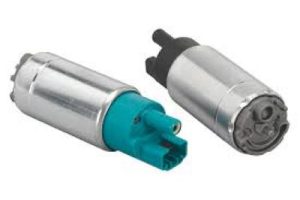In vehicles like the Toyota Camry, a decrease in fuel pressure can be caused by wear in the fuel pump motor, which diminishes its efficiency. When the motor shows signs of reduced power, it can fail to pump the required amount of fuel, causing performance issues like stalling, poor acceleration, or difficulty starting. Ford reports that the average lifespan of a fuel pump ranges between 100,000 and 150,000 miles, but driving conditions, fuel quality, and maintenance habits can influence this. If the vehicle has reached or exceeded this mileage range and is showing symptoms of poor fuel delivery, it may be time to inspect the fuel pump for excessive wear.
The next step is to inspect the fuel pump filter for clogs. A clogged filter can strain the pump, leading to premature wear. A study by Automotive Maintenance Association shows that nearly 30% of fuel pump failures in older vehicles are linked to clogged filters that restrict fuel flow. Replacing the filter regularly can prevent undue stress on the pump and extend its lifespan.
When removing the fuel pump for inspection, check the fuel pump housing for any visible cracks or damage. The presence of rust, corrosion, or discoloration can be signs of long-term exposure to moisture, which can wear out the pump. Diesel engines, for example, are more prone to corrosion due to the higher water content in diesel fuel, which can damage the pump’s internal components over time.

Inspecting the fuel pump relay and wiring is also important. A damaged relay or frayed wires can cause intermittent power loss, which might prevent the pump from operating at full capacity. When testing the relay, ensure it activates when the ignition is turned on, and check for continuity with a multimeter. Honda Civic owners often experience wear due to faulty relays that lead to erratic fuel pump operation, which can be diagnosed by inspecting the relay’s power output.
The condition of the fuel pump’s internal components, like the armature, brushes, and bearings, should also be checked. These parts undergo wear and tear from friction and heat over time. In vehicles like the Chevrolet Silverado, where heavy towing or frequent stop-and-go driving is common, the fuel pump may experience excessive wear due to the increased demand on the system. A worn armature can cause the motor to operate inefficiently, resulting in inconsistent fuel delivery and reduced performance.
Lastly, inspecting the fuel pump’s sound can offer clues about its condition. A whining noise coming from the pump, especially if it’s louder than usual, is often a sign of internal wear or damage. According to AutoTech Reports, a fuel pump that is no longer operating smoothly may produce a noticeable increase in noise due to the motor’s internal components failing to function properly.
In summary, diagnosing excessive wear in a fuel pump requires a combination of methods, including measuring fuel pressure, inspecting the filter and housing for damage, checking the relay and wiring, and evaluating the internal components for signs of wear. Regular inspections and maintenance can help extend the lifespan of a fuel pump, ensuring that it continues to perform at optimal levels, even as it approaches the upper end of its expected lifespan.

